In Blackjack surrender sounds like a loss, but if you know when to surrender, it’s actually one of the smartest moves you can make.
In this blackjack surrender guide, we’ll look at how the 2 types of blackjack surrenders work and tell you the few situations in an online casino when an expert player will take full advantage of it.
What is surrender in blackjack?
The surrender option at a blackjack table allows you to cut your losses in the worst situations you will encounter at the blackjack table. Instead of losing your entire bet most of the time when you have a very weak hand like 16 against a very strong dealer hand, you can ‘surrender’ or fold your hand and take back half of your stake.
But why would you want to give up your chance to win the hand without even trying? To answer that, we need to look at the aim of the game when you play blackjack.
The aim of the game in blackjack is not to make 21, but to make the optimal decision in every situation. Sometimes, that means surrendering your hand and letting the dealer win.
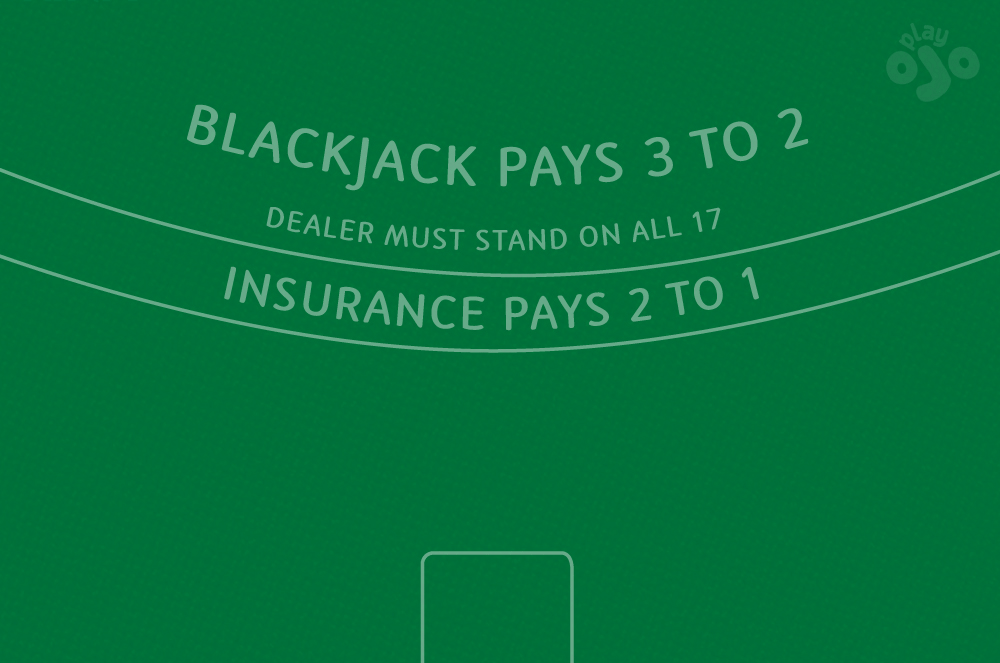
You can only ever surrender your hand once you have received your first 2 cards, but there are 2 versions of blackjack surrender, early and late. In online casino games where surrender is allowed, you can forfeit your starting hand either once the dealer has received their upcard, or – if they have received an Ace – once they have peeked to confirm they do not have Blackjack.
If you choose to surrender, your hand is terminated immediately, the dealer automatically wins and does not continue to play out their hand (unless there are other players at the table), and you get 50% of your stake back.
Bear in mind that we are not talking about gaining an advantage over the house in these specific blackjack hands. We are talking about a small improvement in the amount you will lose compared with the normal approach you learn in Basic Blackjack Strategy.
An example of surrender in action
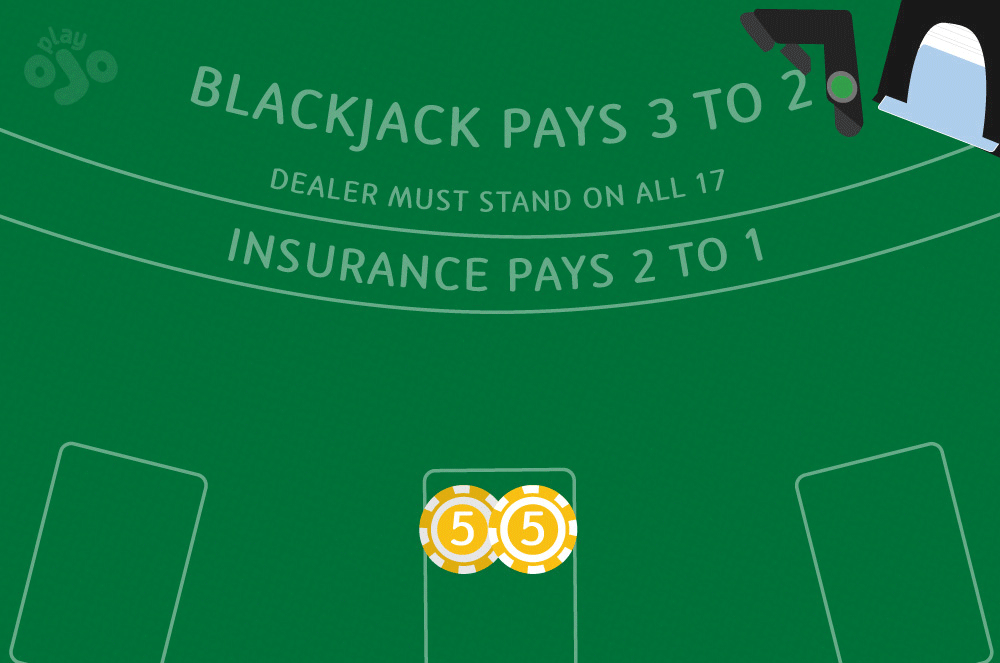
Early surrender
With early surrender, you can fold your starting hand as soon as the dealer has received their hand. If they get an Ace and are permitted to peek to check for Blackjack, you can still surrender before that happens.

Some rules in online blackjack allow you to surrender early against any dealer card, while others permit you to surrender early against any dealer card except an Ace. With the early surrender rule, there are many more situations (compared to the late surrender rule) when surrendering is the right play – for example a pair of 3s, 6s, 7s or 8s against an Ace – but unfortunately it is very rare to find early surrender offered these days.
Late surrender
When Las Vegas casinos realised their Blackjack early surrender rule gave the player too much of an advantage, they created a less generous version called late surrender. This version is exactly the same except for when the dealer’s up card is an Ace.

In this scenario, you do not have the option to surrender until the dealer has peeked i.e. looked at their face down card to check if it is a card with a blackjack value of 10 and therefore gives the dealer Blackjack. Late surrender is 3 times less beneficial to the player than early surrender because in situations where you would otherwise have surrendered early, you now lose to Blackjack before you were even offered the chance to fold your hand.
Blackjack surrender strategy
Surrendering is the very first decision you take, before you consider insurance and then when to split in Blackjack , double down, hit or stand. Surrendering is such a simple player rule – you do or you don’t – that the only factor to consider is when.
The key to optimal surrender strategy is to only surrender in situations where the player has a very small chance of winning the hand. More specifically, these opportunities arise when your optimal average return is less than the 50% RTP you are guaranteed by surrendering. As you can see from the strategy charts for blackjack surrender below, there are only a small number of opportunities where your win odds in blackjack are so small that it’s better for the player to surrender and keep half of their stake.
All of the advice I’m giving relates to the late surrender rule, as it is by far the most common version.
Although it’s pretty easy to memorise the 4 instances (or 7 instances in a H17 game) from the strategy chart where a surrender produces a better return than the average return without surrendering, here’s a simple rule of thumb for 8-deck S17 games:
Rule #1: Surrender 16* v 9, 10 or Ace
Rule #2: Surrender 15 v 10
*Excluding Soft 16 and a pair of 8s
There are only 4 opportunities to correctly surrender in standard European 8 Deck blackjack rules where the dealer stands on Soft 17 in Blackjack . But as you can see from the surrender strategy charts below, if you can find a H17 game, or a single-deck game, you will have a few more chances to surrender.
Blackjack surrender strategy charts
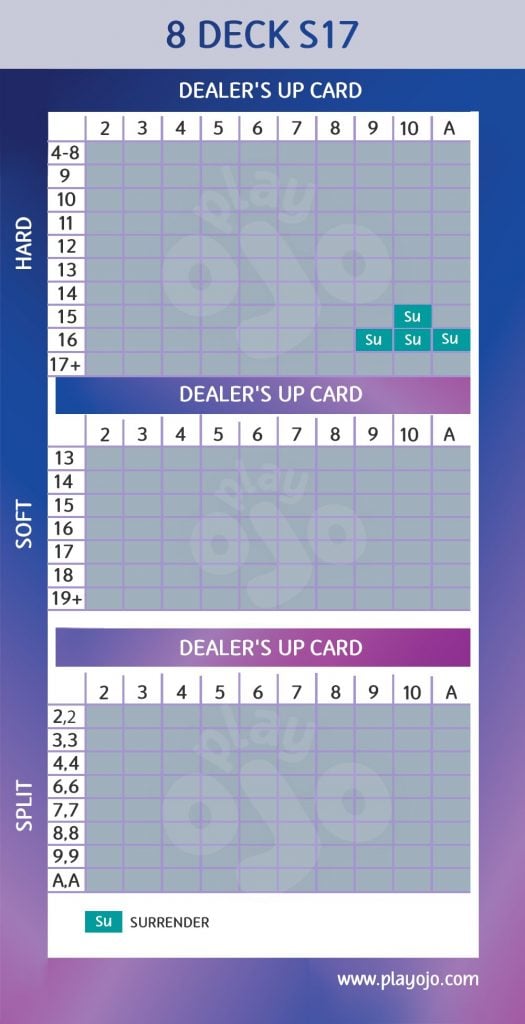
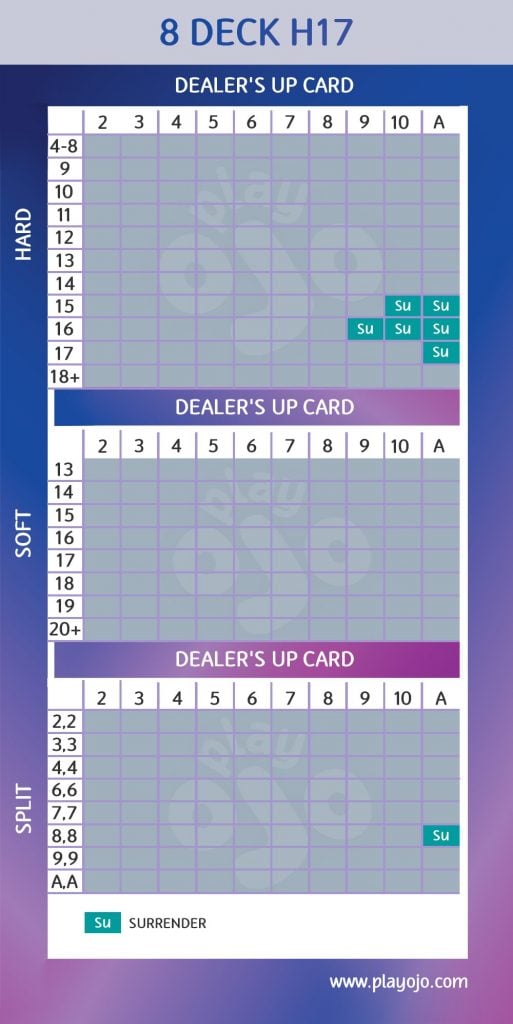
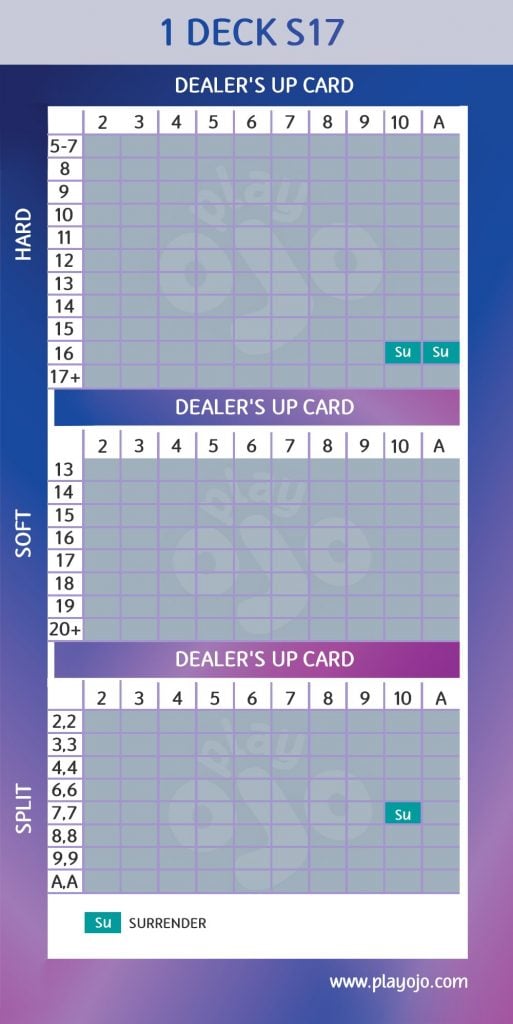
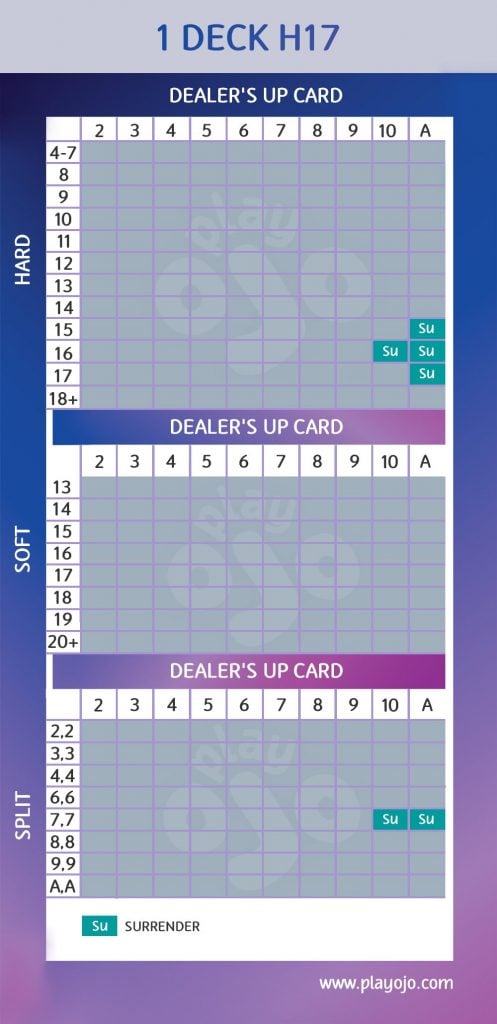
So that’s what basic strategy has to say about when to surrender in the most common forms of Blackjack. But how does a well-played surrender compare to the average return if you just play to the usual Basic Strategy?
Here’s an example of a classic surrender situation using standard American Blackjack rules and the 2 possible outcomes for Late Surrender and No Surrender:

As you can see, the correct strategy at a casino table with no surrender rule is to hit 16 against a Queen. We have a very low chance of winning the hand or pushing and will lose 53p on average. By choosing to surrender, we lose 50p instead.
Sure, if you choose to hit or stand, you can easily win any given hand, as you’re effectively flipping a coin. But over the long run – and that’s the secret to playing blackjack well – the smartest move is to take your medicine and accept a 50p loss over a biggest average loss.
Before we finish, it’s worth mentioning blackjack insurance, another rule that loosely relates to how a player should act when the dealer has an Ace. Some players think there are similarities or even interplay between the two rules, but really there is no comparison or connection between surrender vs insurance in Blackjack. Surrender is a genuine gameplay option, whereas insurance is a side bet.
Yes, you can offset some risk when the dealer has an Ace and you have strong hand (or try to break even with a weak hand), in a vaguely similar way to how we surrender in order to cut our losses. But the two rules are basically unrelated. In some casinos, you can even take insurance and then surrender. I won’t waste your time going into the strategy and maths behind that combination of tactics!
Summary
Most people come into blackjack hoping to get the chance to double down, not give up on hands early. But in blackjack surrender is a great rule, provided you know when to use it. It may not feel good to wave the white flag and give the casino an easy win, but the most important thing to remember about surrendering is to forget the name, leave your ego at the casino door and focus on the skillful strategy behind it. No casino wants a player to use surrender well, so you know it’s a skill worth mastering.
Next time you fire up your favourite online casino, seek out a table with rules that include surrender, or even a game of Blackjack Surrender itself, and look out for the ideal opportunity to save yourself a bet or two.


















